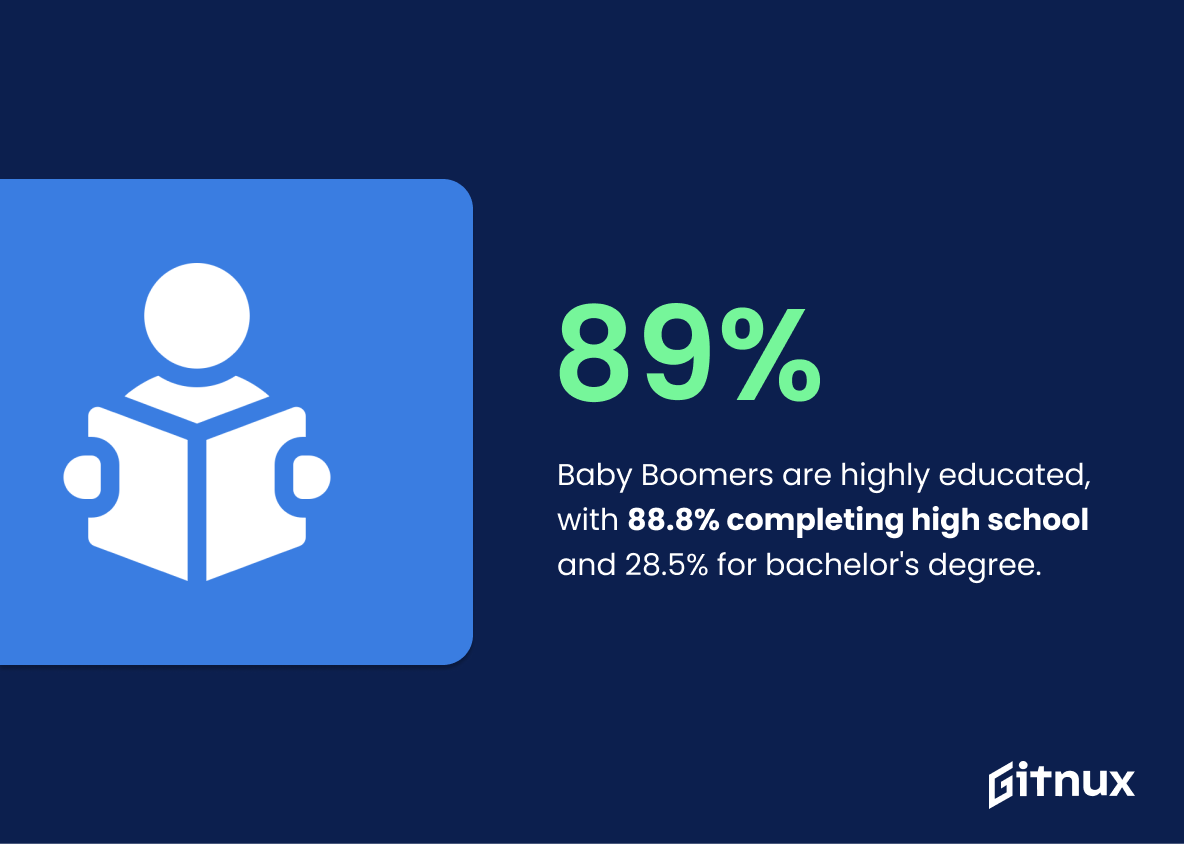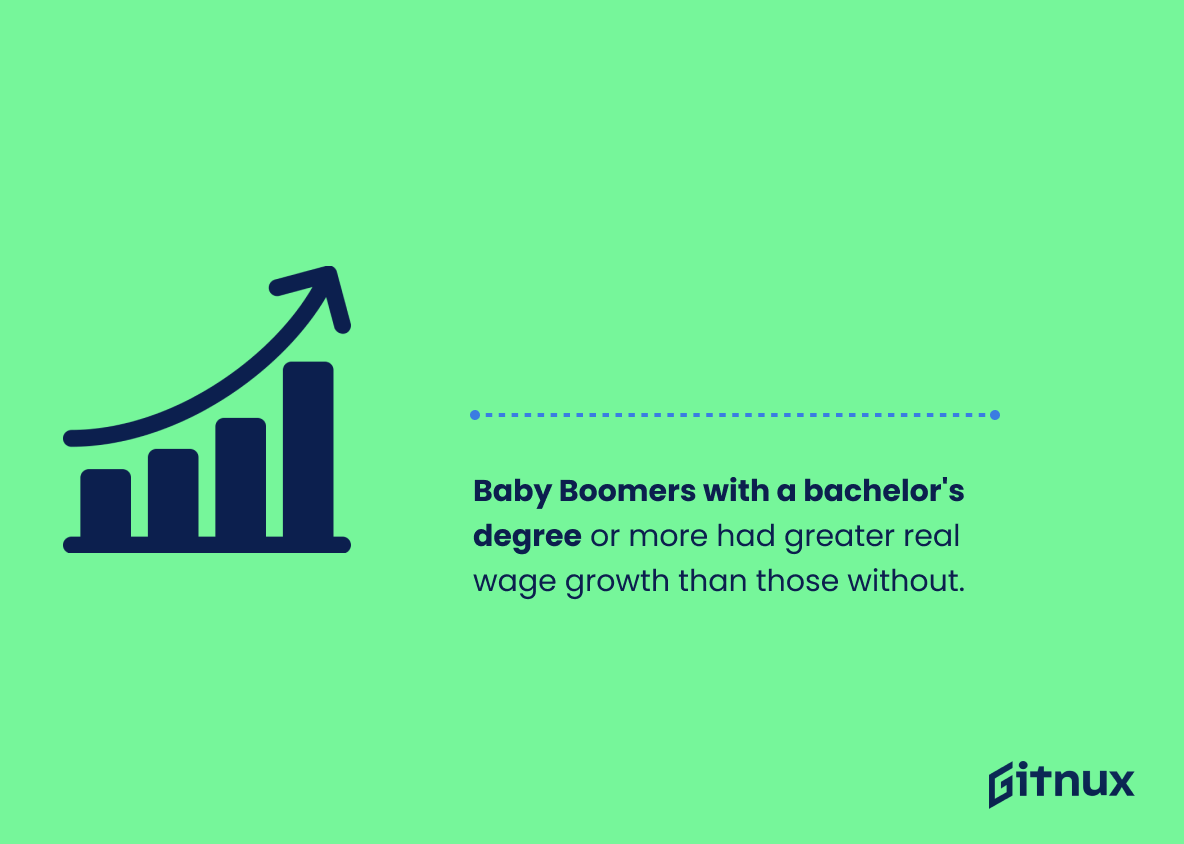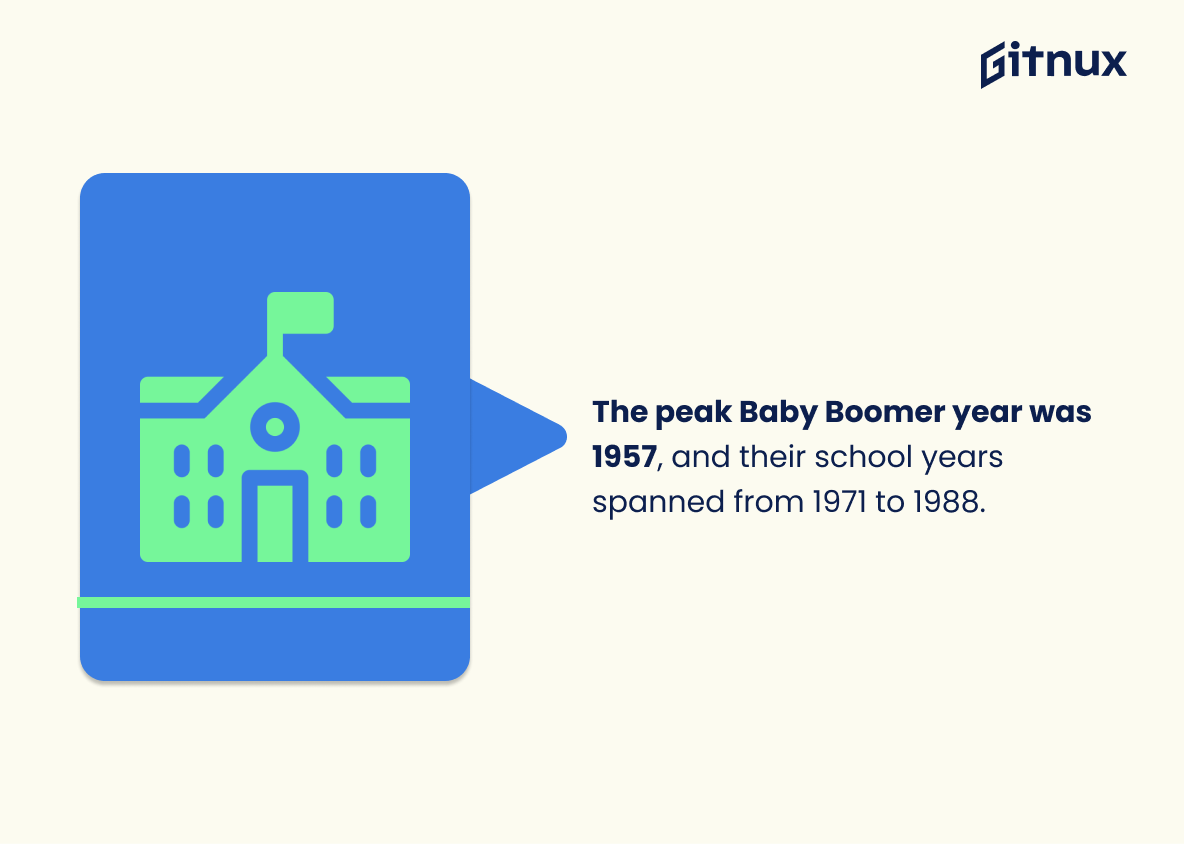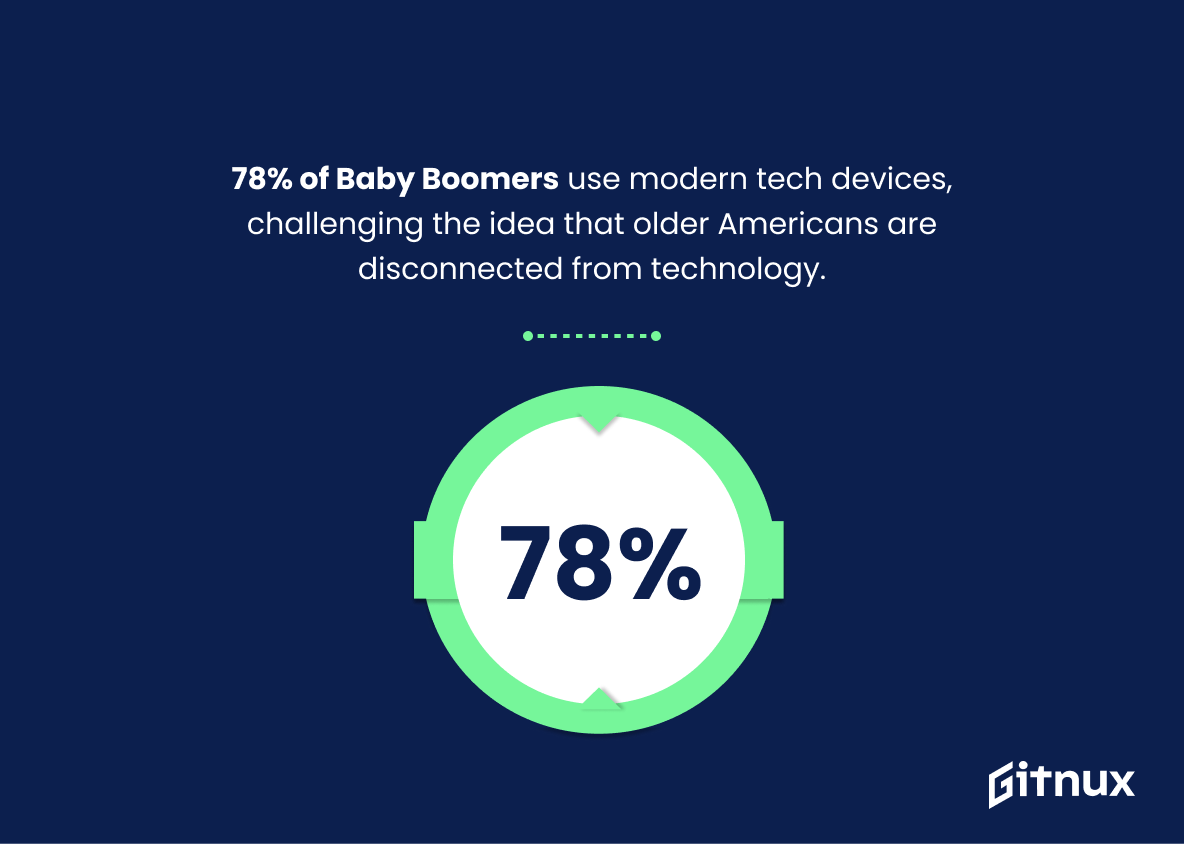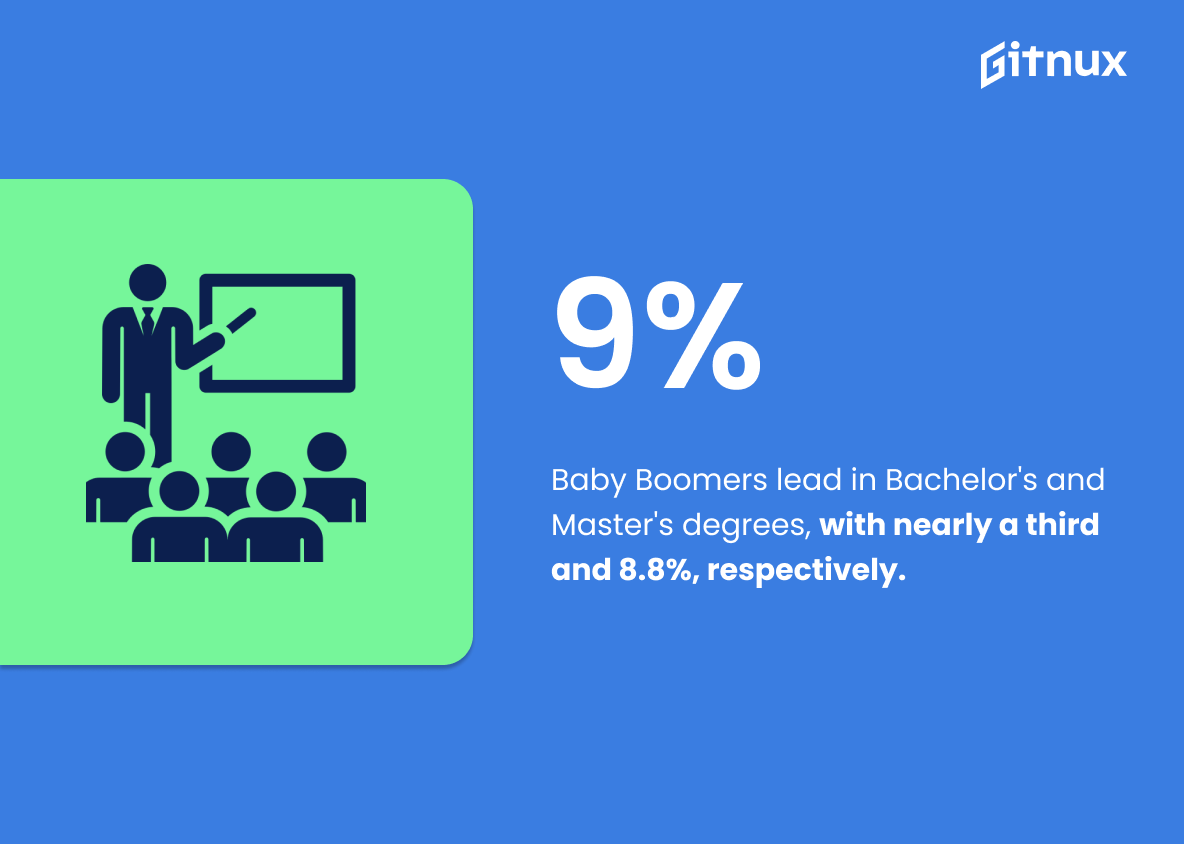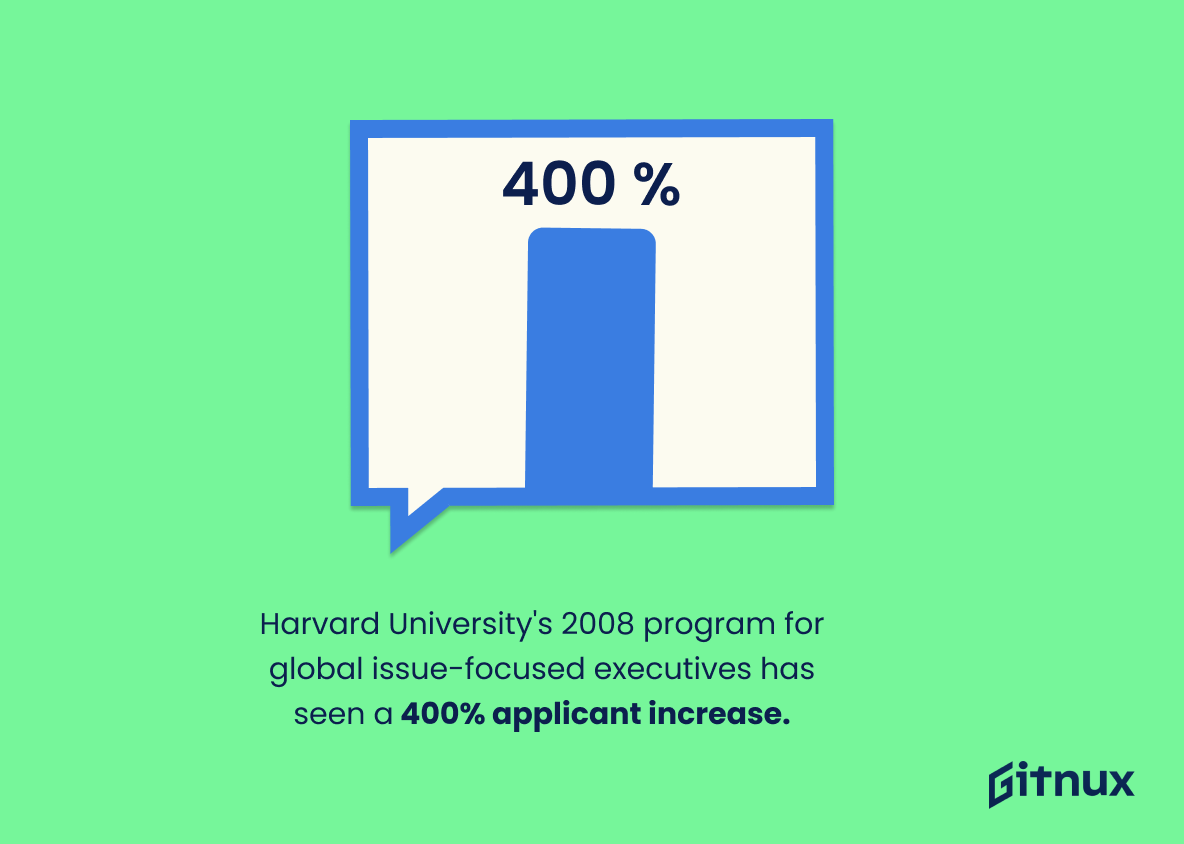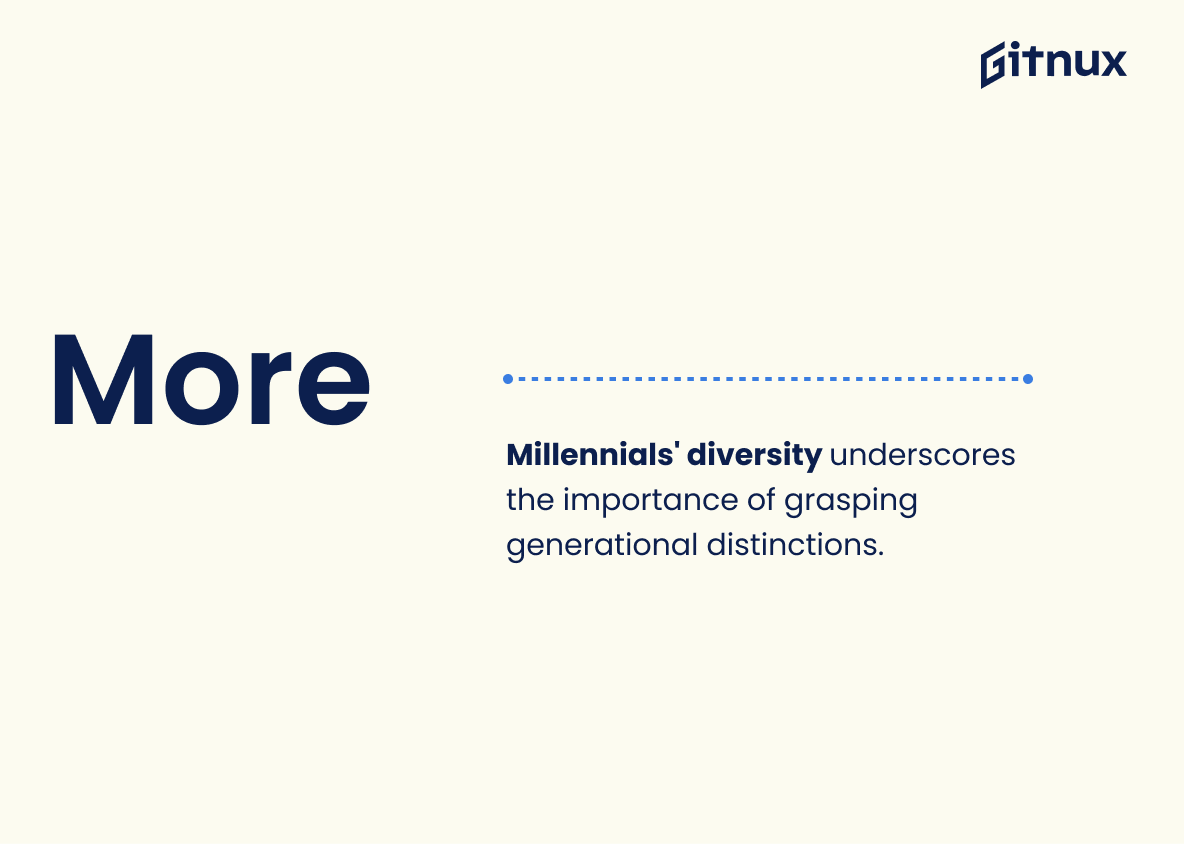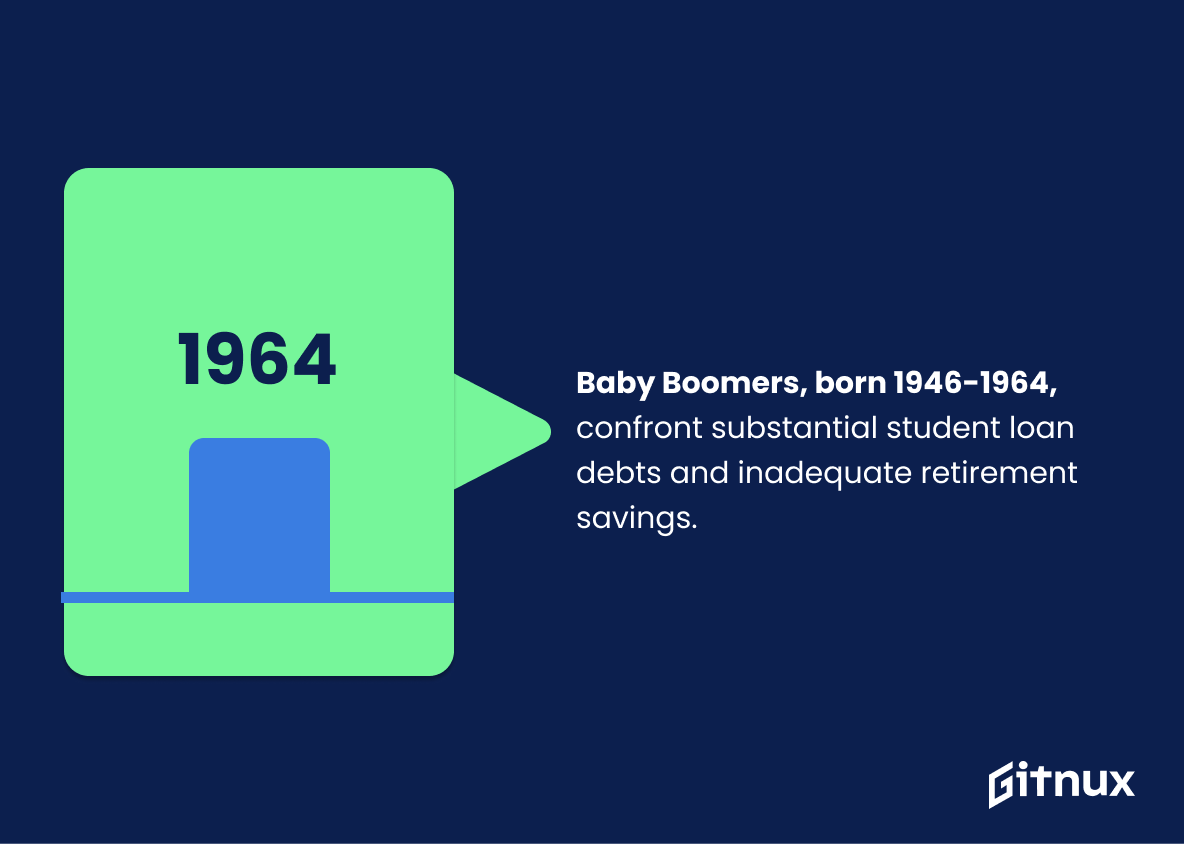As the Baby Boomer generation continues to age, it is important to understand the educational trends of this population. Baby Boomers are defined as those born between 1946 and 1964, and they are now entering retirement age. With this in mind, it is important to understand the educational trends of this generation in order to better understand their needs and how to best serve them.
In this blog post, we will explore the Baby Boomer education statistics to gain a better understanding of this generation. We will look at the educational attainment of Baby Boomers, the types of degrees they have earned, and the impact of their educational attainment on their current and future lives. By understanding the educational trends of Baby Boomers, we can better serve this population and ensure they have the resources they need to live a comfortable and successful life.
Baby Boomer Education: The Most Important Statistics
78% of Baby Boomers embrace technology by devices, showing that older Americans are not necessarily disconnected from modern technology.
California had the most number of in debt Baby Boomers, with 16.73% of the federal student debt and 0.63 million borrowers who owe $40,000 to $60,000 in debt.
Baby Boomer Education Statistics Overview
Baby Boomers with a Bachelor’s degree or higher experienced higher real wage growth than those without a degree.
This shows the value of higher education for Baby Boomers. It also highlights the importance of investing in education for future generations, as it can lead to higher wages and greater economic stability.
The peak year of the Baby Boomer generation was 1957, and the youngest Boomer graduated from high school in 1988, meaning that the Baby Boomers did not start going to school until 1971.
The Baby Boomer generation thus was not present for the social and cultural changes of the 1960s, and that they did not have the same educational opportunities as generations before and after them.
Baby Boomers have a higher level of education than any previous generation, with 88.8% having completed high school and 28.5% holding a bachelor’s degree or higher.
Therefore, they have lived responsible lives, working, paying taxes, and rearing their children, and have invested in their own education. This is important for the future of the country, as Baby Boomers are now heading into retirement and are the mainstream of American demographics.
78% of Baby Boomers embrace technology by devices, showing that older Americans are not necessarily disconnected from modern technology.
This shows that Baby Boomers are willing to learn and adapt to new technologies, which can help them stay connected and engaged with the world.
Baby Boomers have the highest percentage of Bachelor’s degrees of any generation, at nearly a third, and the highest percentage of Master’s degrees, at 8.8%.
The number of 60-year-old and over student enrolments for postgraduate research at Western Australian universities is steadily increasing, mostly among women.
Thus, the Baby Boomer generation is increasingly taking advantage of educational opportunities, even late in life. This demonstrates the value of lifelong learning and the importance of providing educational opportunities for all ages.
Harvard University launched a program in 2008 to direct accomplished executives towards global problems, which has seen a 400% increase in applicants since its inception.
44% of high school completers born between 1960 and 1964 attended college, compared to 73% of those born between 1980 and 1984, indicating an increase in college attendance for both men and women.
Millennials are more racially and ethnically diverse than Baby Boomers, which highlights the need for policy makers and scholars to understand the differences between the two generations in order to effectively address the educational needs of both.
Baby Boomers are taking on debt to finance their children’s higher education. 77% of them are taking out loans for someone else, 10% of undergraduate students having parents who paid for their education through Parent PLUS Loans, and 800,000 Baby Boomer participants in the Parent PLUS loans program.
California had the most number of in debt Baby Boomers, with 16.73% of the federal student debt and 0.63 million borrowers who owe $40,000 to $60,000 in debt.
On this, we can see that Baby Boomers are taking on significant debt to finance their children’s higher education, and if they default on federal student loans, their Social Security benefits may be garnished.
Baby Boomers, born between 1946 and 1964, owe a large amount of money on student loans due to their retirement savings figures being lower than other age groups, making it difficult to pay off their student debt.
It shows that they are having a hard time affording the cost of higher education, which can have long-term implications for their financial security.
Conclusion
In conclusion, Baby Boomer education statistics show that this generation has made significant strides in educational attainment. While this generation was the first to experience the expansion of higher education opportunities, they have also made great strides in terms of educational attainment.
Baby Boomers have achieved higher levels of educational attainment than any other generation before them, and this trend is likely to continue in the future. As they continue to age, Baby Boomers will continue to be an important part of the educational landscape, and their educational accomplishments will continue to shape the future of education.
References
1 – https://www.bls.gov/opub/ted/2019/baby-boomers-with-more-education-had-higher-growth-rates-in-real-earnings-at-every-stage-of-life.htm
2 – https://www.newyorker.com/culture/cultural-comment/the-misconception-about-baby-boomers-and-the-sixties#:~:text=Neither%20did%20the%20rest%20of,been%20over%20for%20seven%20years.
3 – https://www.u-s-history.com/pages/h2061.html#:~:text=Baby%20boomers%20enjoy%20a%20higher,substantially%20over%20the%20last%20century.
4 – https://www.statista.com/chart/13206/device-ownership-among-baby-boomers/
5 – https://webtribunal.net/blog/baby-boomer-facts/#gref
6 – https://theconversation.com/baby-boomer-women-make-up-for-lost-study-time-and-head-back-to-university-82915
7 – https://www.wsj.com/articles/baby-boomers-looking-for-reinvention-try-collegeagain-1514466001
8 – https://www.bls.gov/opub/ted/2019/college-attendance-and-completion-higher-among-millennials-than-youngest-baby-boomers.htm
9 – https://www.bgsu.edu/ncfmr/resources/data/family-profiles/anderson-demographics-baby-boomers-millennials-fp-17-06.html
10 – https://educationdata.org/student-loan-debt-by-generation
11 – https://www.forbes.com/sites/robertfarrington/2020/11/19/baby-boomer-student-loan-debt-is-surging-but-why/?sh=1ac3ee8f7c58
